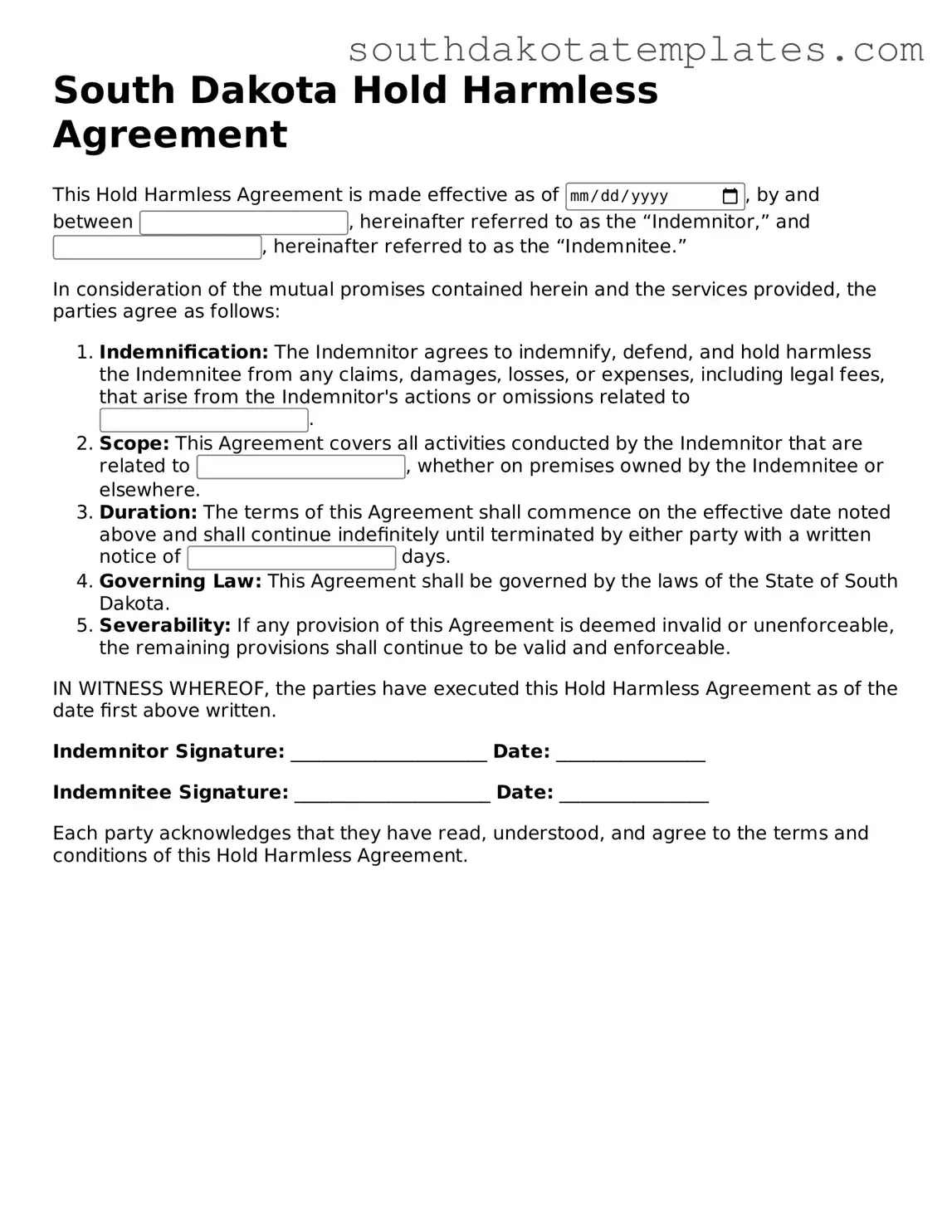Free South Dakota Hold Harmless Agreement Document
The South Dakota Hold Harmless Agreement is a legal document designed to protect one party from liability for damages or injuries incurred by another party. This agreement is often used in various contexts, including contracts for services, events, or property use. Understanding its significance can help individuals and organizations navigate potential risks effectively.
To ensure your interests are protected, consider filling out the Hold Harmless Agreement form by clicking the button below.
Get Hold Harmless Agreement
